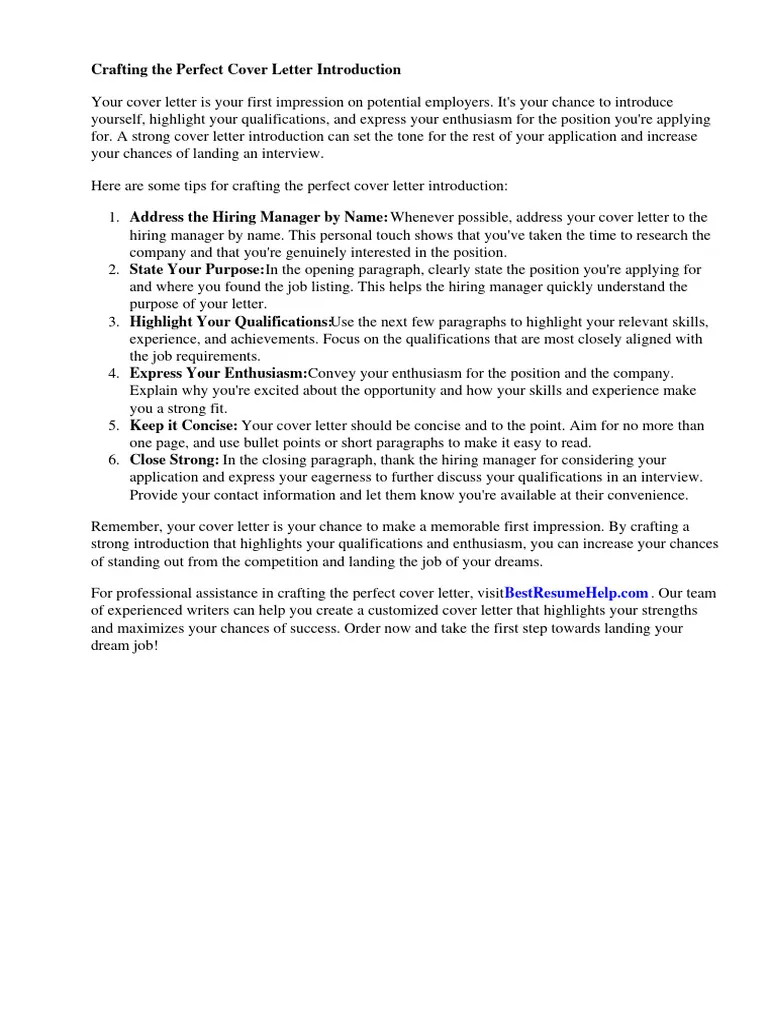What is a Cover Letter?
A cover letter is a formal document that accompanies your resume when you apply for a specific job. It serves as an introduction to your qualifications, skills, and experiences, and it aims to persuade the hiring manager that you are the right fit for the role. Essentially, a cover letter provides context to your resume, allowing you to elaborate on your accomplishments and demonstrate your enthusiasm for the position and the company. It should highlight your relevant skills and experiences and show how they align with the job requirements. Furthermore, a well-written cover letter showcases your communication skills and personality, giving you an edge over other applicants.
Purpose of a Cover Letter
The primary purpose of a cover letter is to convince the hiring manager to read your resume and consider you for an interview. It’s your opportunity to make a strong first impression and showcase your personality and writing skills. The cover letter helps you to explain why you’re interested in the job and the company, and why your skills and experience make you a great candidate. It allows you to elaborate on specific achievements and quantify your contributions, which can be challenging to do in a resume. A cover letter also provides an opportunity to address any gaps in your employment history or explain career changes. Overall, the goal is to secure an interview and ultimately, land the job.
Key Components of a Cover Letter
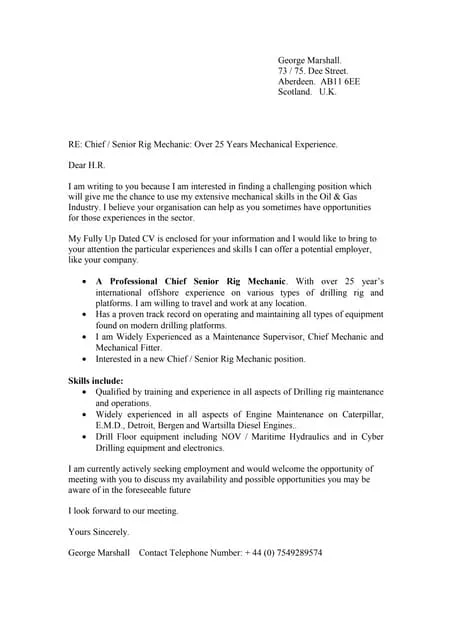
A standard cover letter includes several key components. Begin with a professional header including your contact information and the date, followed by the hiring manager’s name and the company’s address. The body of the letter should begin with an engaging introduction that captures the reader’s attention and states the specific position you’re applying for. The next section should highlight your relevant skills and experiences, providing specific examples to demonstrate your qualifications. Then, express your enthusiasm for the company and the position, explaining why you’re a good fit for the role. Finally, conclude with a strong call to action, such as requesting an interview, and thank the hiring manager for their time and consideration. Ensure the letter is well-formatted, proofread, and tailored to the specific job.
What is a Letter of Introduction?
A letter of introduction, unlike a cover letter, isn’t typically tied to a specific job application. Instead, it is a proactive communication tool used to introduce yourself to a potential employer or contact. Its purpose is to create a connection, share your skills and experiences, and express your interest in future opportunities, even if there are no current openings. This letter is often used for networking or to express your interest in a company where you’d like to work. It can be a great way to build relationships, explore opportunities, and get your foot in the door. The key is to provide value to the recipient, which may involve offering your skills or expertise, or simply expressing your interest in the company and its mission.
Purpose of a Letter of Introduction
The primary purpose of a letter of introduction is to initiate a conversation and establish a professional connection. It’s about building relationships and letting a potential employer know you exist and are interested in their company. It can be used to introduce yourself, your skills, and your qualifications, without necessarily applying for a specific job. The goal is to make a positive first impression and express your interest in the company. It’s often used in networking, cold outreach, or when you’re exploring career options. It helps you to stand out and get noticed by a potential employer, even when there are no current job openings that align with your skills and experience. Furthermore, it allows you to express your interest in the company’s mission and values.
Key Components of a Letter of Introduction
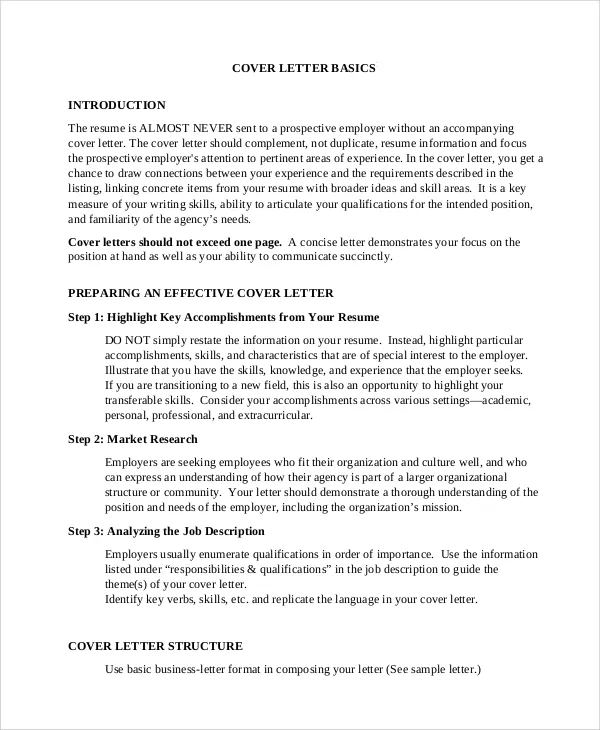
A letter of introduction typically includes a brief introduction, a summary of your relevant skills and experiences, and an expression of your interest in the company. Start with a personalized greeting, addressing the recipient by name if possible. Briefly state who you are and what your purpose is for writing the letter. Highlight your key skills and experiences that are relevant to the company or the industry. This section should be concise and tailored to the recipient. Express your interest in the company and its work. Conclude with a call to action, such as offering to provide more information or expressing your interest in a follow-up conversation. Make sure to include your contact information. Keep it professional, polite, and focused on creating a positive impression.
Letter of Introduction vs Cover Letter — Key Differences
The key differences between a letter of introduction and a cover letter lie in their purpose, target audience, and content. Understanding these distinctions will help you determine which type of letter is appropriate for a specific situation. These differences are crucial for crafting the right communication and achieving your desired outcome, whether it is landing a job or expanding your professional network.
Purpose and Function
A cover letter’s primary function is to support a job application and highlight how your skills and experience match the job requirements. It directly addresses a specific job opening and aims to convince the hiring manager to review your resume and offer you an interview. On the other hand, a letter of introduction aims to introduce yourself and initiate a connection with a potential employer, even without a specific job in mind. The main purpose of a letter of introduction is to build a relationship and create awareness of your skills and availability. It can be a proactive way to network and explore career opportunities.
Target Audience
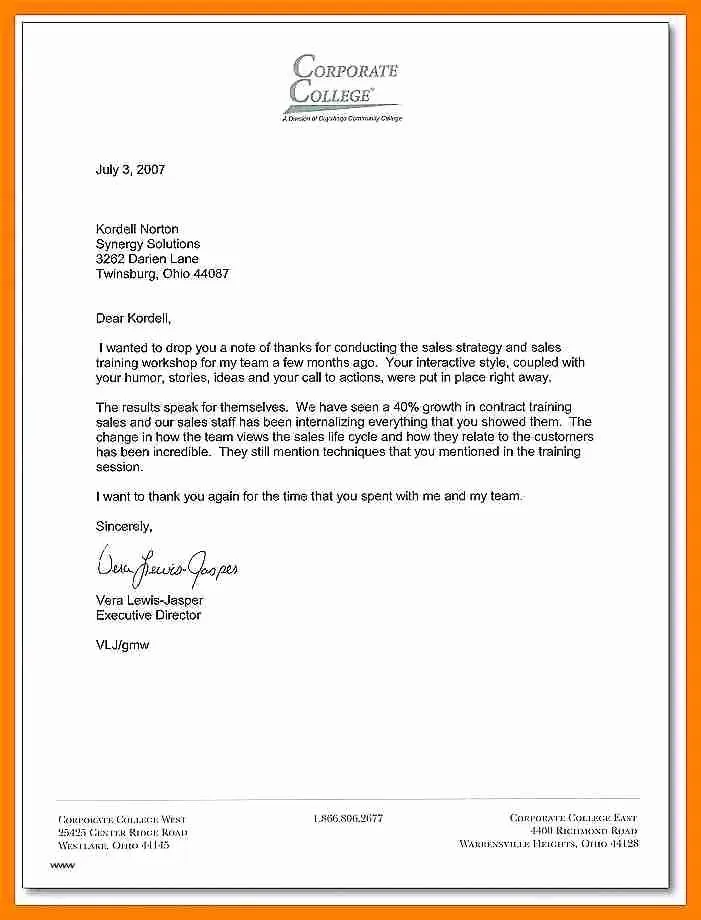
A cover letter is always directed toward a hiring manager or recruiter at a specific company for a particular job. The content is tailored to the job description and the company’s needs. Conversely, the target audience for a letter of introduction can be broader. It might be a hiring manager, a potential contact in your field, or someone you admire in a company. It’s a tool for networking and initiating a connection with anyone who might be able to provide valuable information or opportunities. Therefore, the tone and content should be more generalized to suit a broader range of recipients.
Structure and Content
The structure and content of a cover letter are highly specific and detailed, directly addressing the job requirements. The cover letter will highlight the most relevant skills and experiences. A letter of introduction, however, is less specific and more general in nature. It usually provides a brief overview of your skills, expresses interest in the company, and offers to provide more information. The content should focus on building rapport and creating a positive first impression rather than trying to fill a specific job description. Therefore, it is important to differentiate them when it comes to structure and content.
When to Use Each Letter
Letter of Introduction
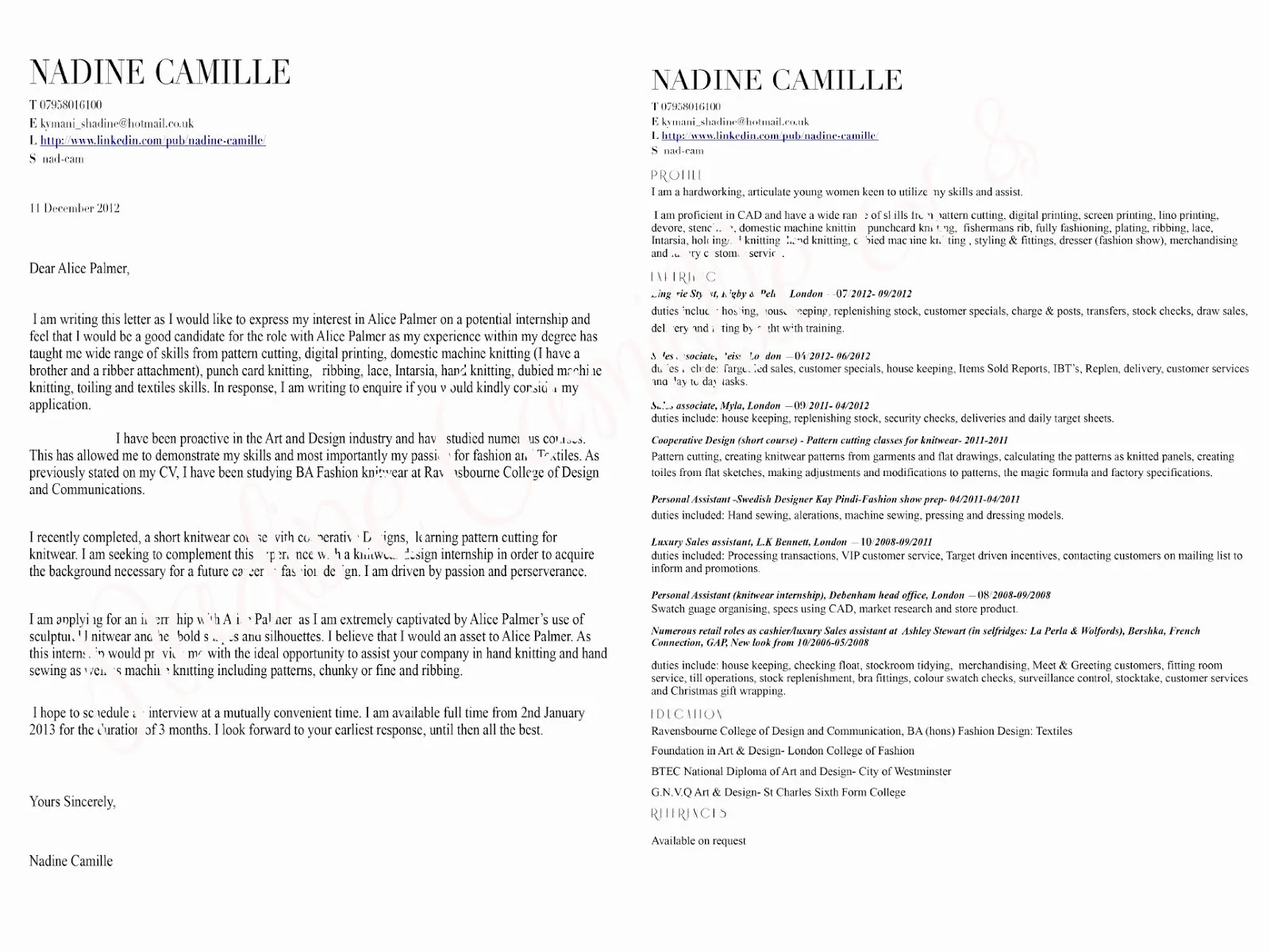
Use a letter of introduction when you want to proactively introduce yourself to a company, even without a specific job opening. It is also appropriate for networking, reaching out to people in your industry, or exploring potential career opportunities. Consider using a letter of introduction if you’re changing careers, or entering a new industry. It’s an effective tool for making a first impression and opening doors. For example, If you are attending a conference and want to connect with the company representative. Send them a letter of introduction.
Cover Letter
Always use a cover letter when applying for a specific job. Include it with your resume when submitting a job application to provide context and highlight your qualifications and interest in the position. It is essential for every job application. Use it when you are asked to submit a cover letter or when the job advertisement specifically requests it. A cover letter is a critical component of your application to help you stand out from other candidates. Always tailor it to the specific job description.
Tips for Writing an Effective Letter of Introduction
Keep it Concise
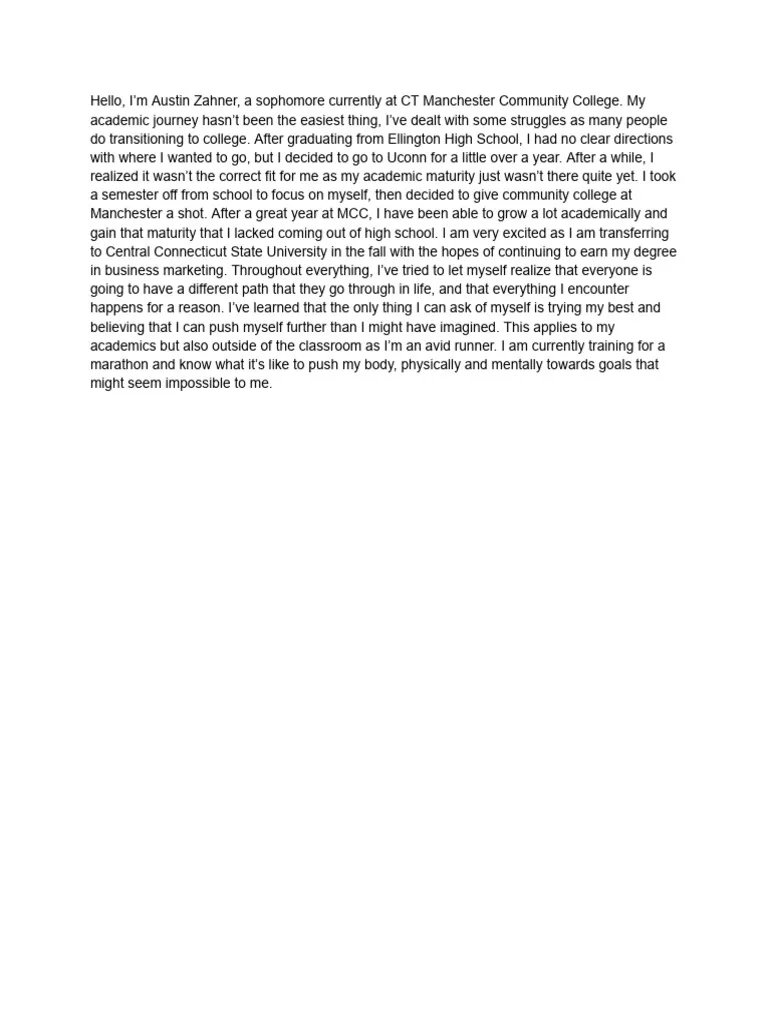
A letter of introduction should be brief, usually no more than one page. Get straight to the point, highlight your most relevant skills, and express your interest in the company. A concise letter is more likely to be read and remembered.
Highlight Your Skills and Value
Focus on the skills and experiences that are relevant to the recipient or the company. Explain what value you can bring to the organization and why they should consider connecting with you. This helps create a positive impression and encourages a response from the recipient.
Include a Clear Call to Action
Make it easy for the recipient to respond. Include a clear call to action, such as requesting a brief phone call, inviting them to connect on LinkedIn, or offering to provide more information. Provide your contact information and make it easy for the recipient to get in touch with you.
Tips for Writing an Effective Cover Letter
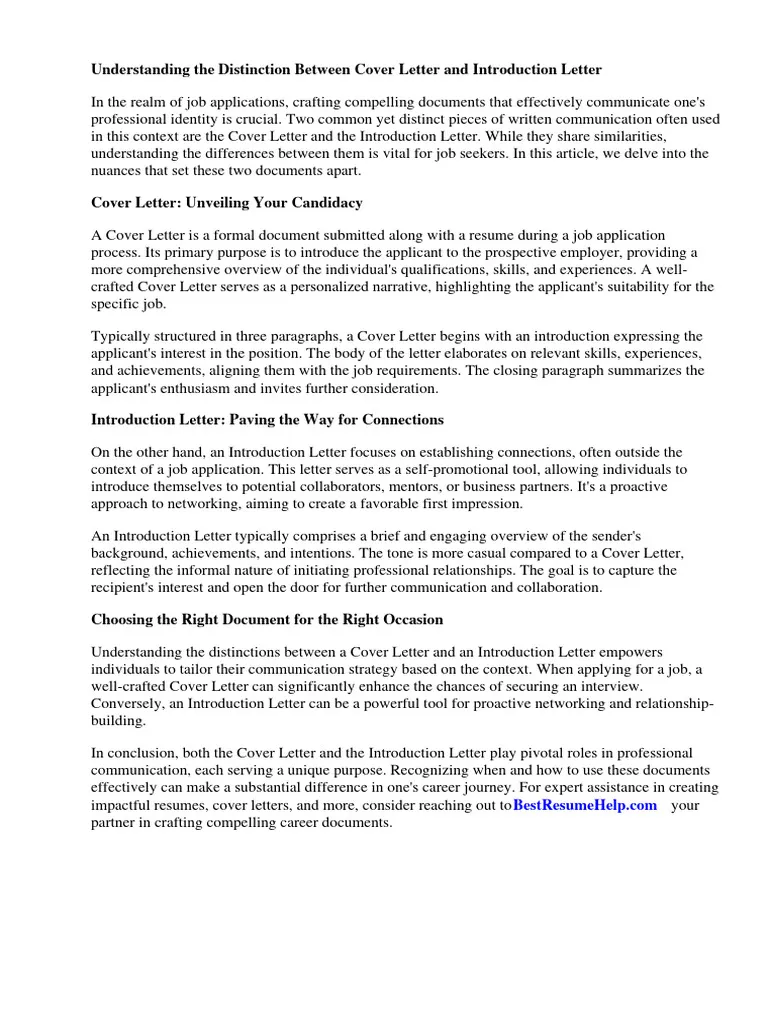
Tailor to the Job
Customize your cover letter for each job you apply for. Highlight the skills and experiences that are most relevant to the specific job description. Tailor it to align with the job requirements, making it clear why you are a strong fit for the role.
Showcase Your Accomplishments
Use specific examples to showcase your accomplishments and quantify your contributions whenever possible. Use action verbs to describe your achievements. This provides concrete evidence of your abilities and makes your cover letter more impactful.
Proofread Carefully
Always proofread your cover letter for any errors in grammar, spelling, and punctuation. A polished and error-free cover letter demonstrates professionalism and attention to detail. Ask a friend or family member to review your letter to catch any mistakes you might have missed.
